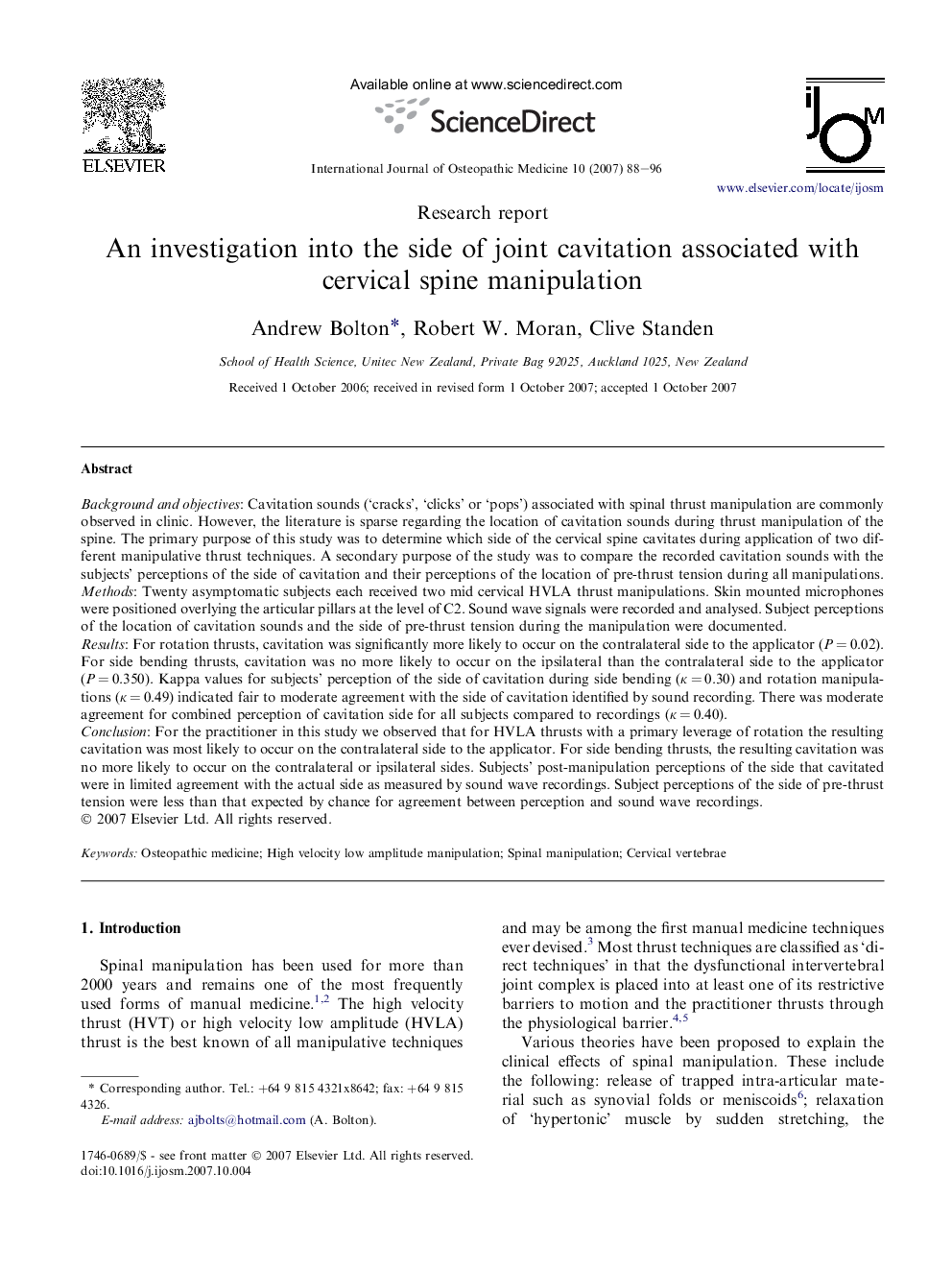| کد مقاله | کد نشریه | سال انتشار | مقاله انگلیسی | نسخه تمام متن |
|---|---|---|---|---|
| 2619001 | 1563022 | 2007 | 9 صفحه PDF | دانلود رایگان |

Background and objectivesCavitation sounds (‘cracks’, ‘clicks’ or ‘pops’) associated with spinal thrust manipulation are commonly observed in clinic. However, the literature is sparse regarding the location of cavitation sounds during thrust manipulation of the spine. The primary purpose of this study was to determine which side of the cervical spine cavitates during application of two different manipulative thrust techniques. A secondary purpose of the study was to compare the recorded cavitation sounds with the subjects' perceptions of the side of cavitation and their perceptions of the location of pre-thrust tension during all manipulations.MethodsTwenty asymptomatic subjects each received two mid cervical HVLA thrust manipulations. Skin mounted microphones were positioned overlying the articular pillars at the level of C2. Sound wave signals were recorded and analysed. Subject perceptions of the location of cavitation sounds and the side of pre-thrust tension during the manipulation were documented.ResultsFor rotation thrusts, cavitation was significantly more likely to occur on the contralateral side to the applicator (P = 0.02). For side bending thrusts, cavitation was no more likely to occur on the ipsilateral than the contralateral side to the applicator (P = 0.350). Kappa values for subjects' perception of the side of cavitation during side bending (κ = 0.30) and rotation manipulations (κ = 0.49) indicated fair to moderate agreement with the side of cavitation identified by sound recording. There was moderate agreement for combined perception of cavitation side for all subjects compared to recordings (κ = 0.40).ConclusionFor the practitioner in this study we observed that for HVLA thrusts with a primary leverage of rotation the resulting cavitation was most likely to occur on the contralateral side to the applicator. For side bending thrusts, the resulting cavitation was no more likely to occur on the contralateral or ipsilateral sides. Subjects' post-manipulation perceptions of the side that cavitated were in limited agreement with the actual side as measured by sound wave recordings. Subject perceptions of the side of pre-thrust tension were less than that expected by chance for agreement between perception and sound wave recordings.
Journal: International Journal of Osteopathic Medicine - Volume 10, Issue 4, December 2007, Pages 88–96